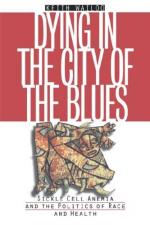|
This section contains 732 words (approx. 3 pages at 300 words per page) |

|
Sickle cell anemia is an inherited blood disorder that arises from a single amino acid substitution in one of the component proteins of hemoglobin. The component protein, or globin, that contains the substitution is defective. Hemoglobin molecules constructed with such proteins have a tendency to stick to one another, forming strands of hemoglobin within the red blood cells. The cells that contain these strands become stiff and elongated--that is, sickle shaped.
A child who inherits the sickle cell trait from both parents—a 25% possibility if both parents are carriers--will develop sickle cell anemia. Sickle cell anemia is characterized by the formation of stiff and elongated red blood cells, called sickle cells. These cells have a decreased life span in comparison to normal red blood cells. Normal red blood cells survive for approximately 120 days in the bloodstream; sickle cells last only 10-12 days. As...
|
This section contains 732 words (approx. 3 pages at 300 words per page) |

|


